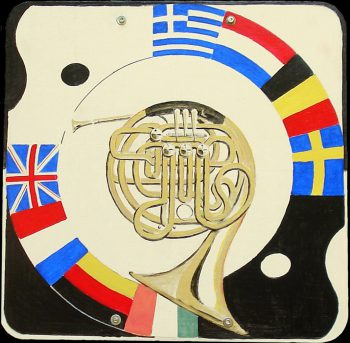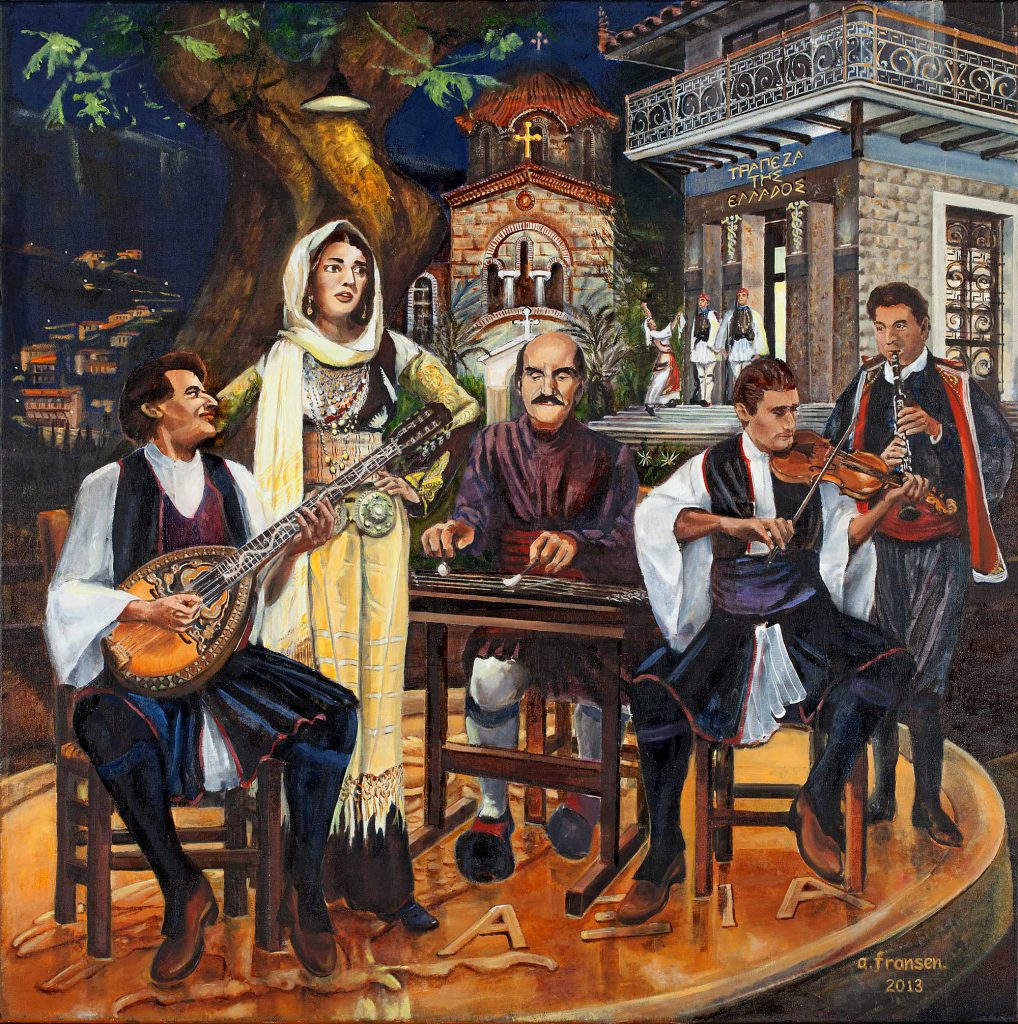Middle panel
Right panel
Triptych
The entire foreground is occupied by a stage in the form of a golden coin. An owl is depicted on it, as was the case with Athenian coins as early as the fifth century BC and, more recently, with the drachma and, subsequently, the euro. However, this coin is neither a drachma nor a euro; it says AXIA, a word which in both Ancient and Modern Greek means ‘value, honour, dignity’ as well as ‘merit’, the latter in the sense of wage, but also punishment.
Reminiscence:
- Δεν ξέρω πόσο σ’αγαπώ ‘I don’t know how much I love you’ (Απόστολος Καλδάρας).
» Read more
The return to the drachma as a currency system, in other words, leaving the Eurozone of the European Economic Community, is the subject of heated debate during the current economic crisis, both in Greece and abroad.
The musicians, who served as models for this painting, are in this staging fitting icons themselves; they are indeed Greek, but also represent symbols of cultural transfer and heritage in general. Their traditional costumes are from different areas such as Boeotia (Tanagra), Epirus (Metsovo and Vovoussa) and even from Crete. From left to right:
Gregoris Tzistoudis (1950–), bouzouki
Maria Callas (1923–1977), singer
Aristidis Moschos (1930–2001), sandouri
Hector Cosmas (1966–2012), violin
Yorgos Mangas (1952–), clarino
Two Evzones are on guard in front of the Bank of Greece, armed with a bayonet on their rifle. The Evzones are an elite unit of the Greek army, ceremonially guarding the Tomb of the Unknown Soldier and the Presidential Mansion in Athens – you won’t find them standing in front of a bank. Either way, nothing escapes their attention, and nothing can seduce them from their duty, not even a massive round dance . . . you would hope!
The staff of Hermes is depicted twice on the building’s facade. This reference is not accidental, nor is the name of the kafenion, Hermes (O ΕΡΜΗΣ), on the middle canvas; bank and café are part of the same building. As Hermes was first and foremost a god of boundaries and transitions, the question is whether a strict separation is maintained inside the building, despite the ceremonial guard outside.
» Read less

